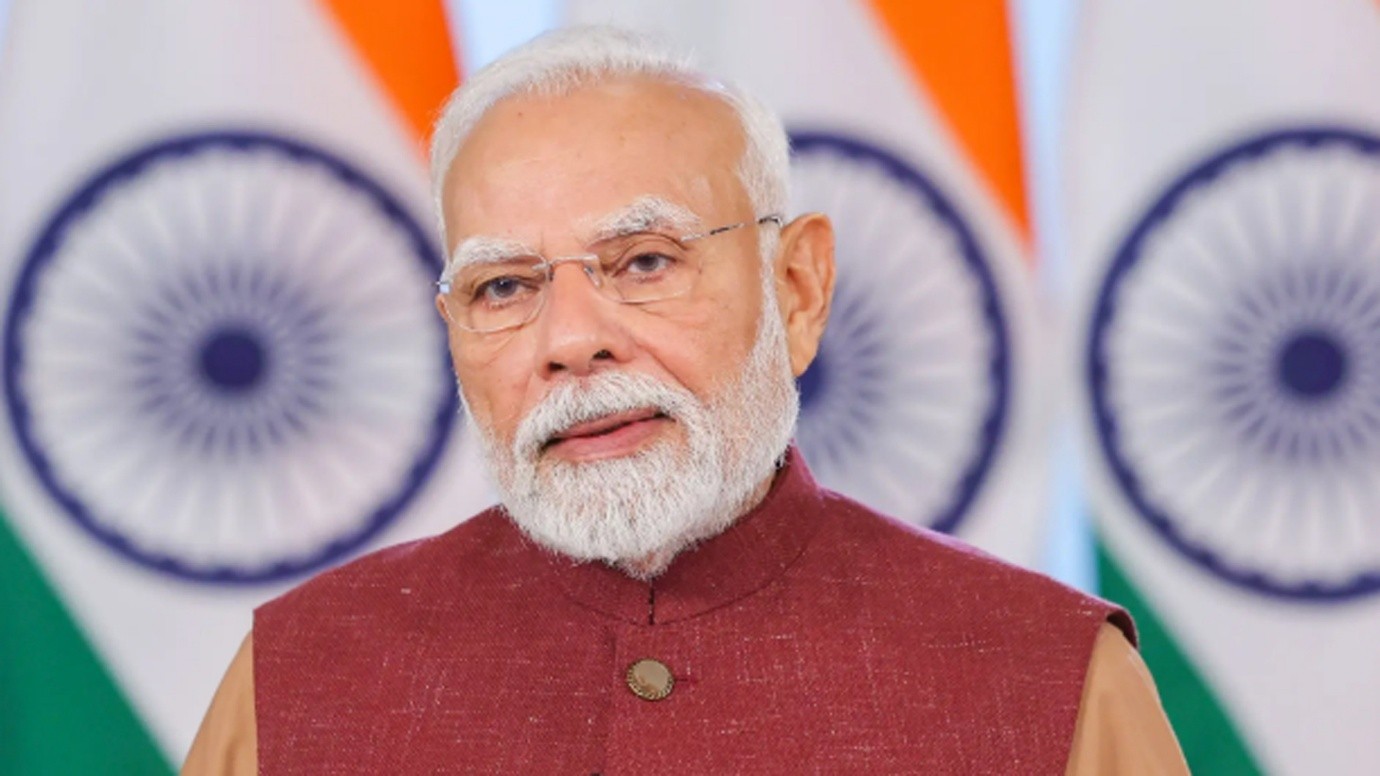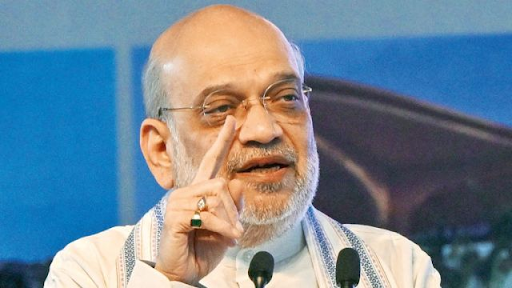Description

Copyright infringement not intended
Picture Courtesy: https://www.hindustantimes.com/india-news/remove-deepfakes-within-3-hours-of-being-notified-election-commission-to-political-parties-101715023235465.html
Context: The Election Commission of India (ECI) has issued directives regarding the use of deepfakes and misinformation during election campaigns.
Details
- The Election Commission of India (ECI) has responded to the issue of deepfakes and their potential impact on elections, highlighting critical concerns and leaving certain aspects unclear regarding their effectiveness and scope.
- The ECI emphasized the erosion of trust caused by manipulated content, which can influence voter opinions and deepen societal divisions. It urged political parties to refrain from sharing content derogatory to women and to report unlawful information and fake accounts on social media platforms.
What is a Deepfake?
- Deepfakes are synthetic media, typically videos or audio recordings, created using artificial intelligence (AI) and machine learning techniques. These technologies enable the manipulation of visual and auditory content to make it appear as though a person is saying or doing something they did not.
- Deepfakes are generated by training deep learning algorithms on vast amounts of data, such as images and videos of a target person. These algorithms can then produce highly realistic and convincing fake content by digitally altering facial features, voice patterns, or body movements.
Types of Deepfakes
- Face Swaps: Deepfake technology can superimpose one person's face onto another's in a video, creating the illusion that the target person is performing actions they did not.
- Voice Synthesis: AI-driven voice synthesis techniques can replicate a person's voice with high accuracy, allowing for the creation of fake audio recordings.
- Manipulated Videos: Entire video sequences can be altered using deepfake technology, enabling the fabrication of events or statements that never occurred.
Use of Deepfakes in Elections
- Deepfakes can be used to spread false information about candidates, parties, or political issues, leading to confusion among voters.
- Deepfakes can be employed as a tool for political propaganda, manipulating public perception and swaying opinions.
- Deepfake videos can impersonate candidates, showing them making controversial statements or engaging in inappropriate behaviour to damage their reputation.
Impact on the Electoral Process
- Deepfakes can influence voter perceptions by presenting false or misleading narratives about candidates and political parties.
- The widespread use of deepfakes can contribute to the circulation of false information, undermining the integrity of the electoral process.
- Deepfakes have the potential to influence voter behaviour by shaping attitudes and beliefs based on fabricated content.
How Deepfakes Can Influence Elections?
- Deepfakes can erode public trust in political figures by creating doubt about the authenticity of their statements and actions.
- Deepfakes can sow confusion among voters, making it challenging to distinguish between genuine and fabricated content.
- Strategic deployment of deepfakes can influence public opinion and impact election outcomes by manipulating voter sentiment.
|
Detection and Prevention
●Advanced AI-based tools and algorithms are being developed to detect deepfakes and identify manipulated content.
●Governments are considering legislative measures to address the threat posed by deepfakes, including regulations on content moderation and accountability.
●Educating the public about the existence and dangers of deepfakes to foster critical thinking and skepticism.
●Partnership between governments, tech companies, and researchers to develop effective tools and strategies for combating deepfakes.
|
Directives from ECI regarding the use of deepfakes
Warning Against Misinformation and Deepfakes
- The ECI has directed political parties not to share content that includes deepfakes or any other misinformation on social media platforms. They have emphasized the potential negative impact of such content on voter opinions, societal harmony, and trust in the electoral process.
Protection of Women and Dignity
- Parties have been specifically instructed not to post or promote content that is derogatory to women or undermines their honour and dignity. This is a crucial aspect of maintaining ethical standards in election campaigning.
Reporting and Grievance Redressal
- Political parties have been asked to report unlawful information and fake user accounts resembling their official handles on social media platforms. They are also provided with a mechanism (Grievance Appellate Committee) to address the continued presence of such content after reporting to the platforms.
Three-Hour Takedown Directive
- The ECI has set a maximum timeline of three hours for political parties to take down any detected deepfake audios/videos and identify/warn the responsible individuals within their party.
|
Ethical Considerations
●Freedom of Speech v/s Misinformation: Balancing the right to free expression with the need to prevent the harmful effects of misinformation facilitated by deepfakes.
|
Uncertainties and Remaining Questions
Timing and Impact of Response
- The ECI's directive came after two phases of elections were already completed, raising concerns about the impact of this response on ongoing campaigns and the overall electoral process.
Clarity in Language and Enforcement
- The language used by the ECI, particularly regarding the takedown of deepfakes "upon notice" and the "warning" of responsible individuals, lacks clarity on enforcement mechanisms. It remains unclear how parties are expected to effectively comply with these directives.
Coverage of Secure Messaging Platforms (e.g., WhatsApp)
- The ECI's letter primarily addresses social media platforms like Facebook, Instagram, and Twitter but does not specify actions regarding deepfake-led disinformation on encrypted messaging platforms such as WhatsApp. This is a significant gap considering the widespread use of WhatsApp in India.
AI-Based Calls and Non-Social Media Campaigns
- The use of AI-based real-time calls for voter engagement, which operates outside social media platforms, has not been addressed in the ECI's response. This aspect raises concerns about the potential misuse of technology beyond traditional social media
Future Considerations and Recommendations
- Enhanced Monitoring and Collaboration: There is a need for enhanced monitoring mechanisms and collaboration between the ECI, political parties, and technology platforms to effectively combat deepfakes and misinformation across all digital channels.
- Clear Guidelines and Enforcement Measures: The ECI should provide clearer guidelines and robust enforcement measures to ensure timely takedown of deepfake content and accountability for parties sharing such content.
- Comprehensive Coverage of Platforms: Measures to address deepfakes and misinformation should extend to encrypted messaging platforms like WhatsApp, which play a significant role in disseminating information during elections.
- Regulation of Emerging Technologies: Proactive regulation of emerging technologies, including AI-based tools, is essential to safeguard the integrity and fairness of electoral processes in the digital age.

Conclusion
- While the ECI's response acknowledges the challenges posed by deepfakes and misinformation in elections, there is a need for clearer directives and comprehensive strategies to address these issues effectively across all digital platforms and campaign channels. Ongoing collaboration and proactive measures are crucial to uphold the integrity of democratic processes amidst evolving technological landscapes.
Must Read Articles:
DEEPFAKE TECHNOLOGY
ELECTION COMMISSION OF INDIA (ECI)
Source:
Indian Express
Wikipedia
Deccanherald
|
PRACTICE QUESTION
Q. Deepfakes and manipulated content can potentially target not just political parties/candidates but also specific communities, religions, or other groups, thereby amplifying societal divisions. Critically Analyze
|











